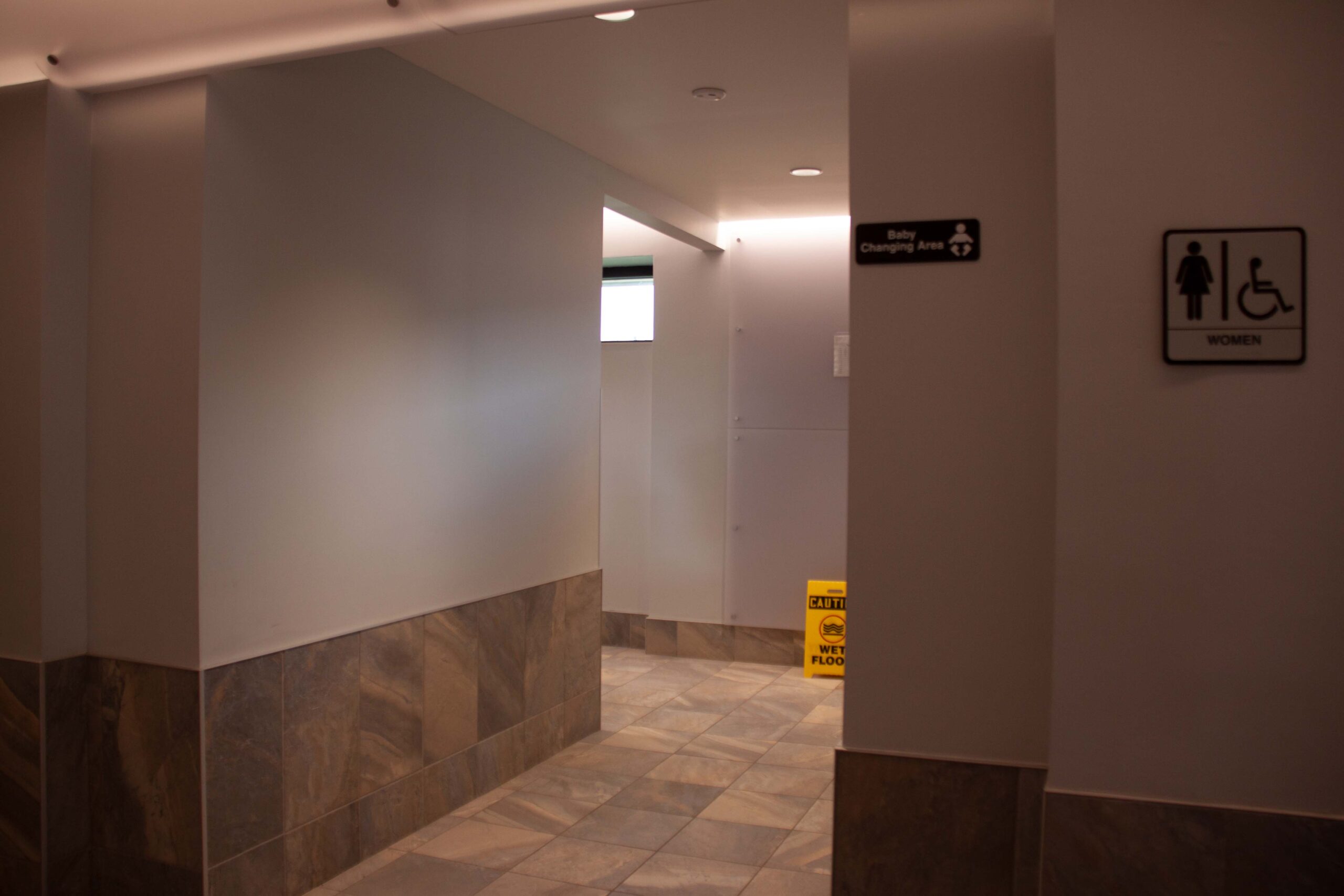By Linsa Dean
March 2020 marked an important milestone in all our lives. The world stopped, confusion set in, and our pets had the best days of their lives with everyone home. My March was just as chaotic, but with an unexpected consequence.
After contracting COVID-19 what used to be minor inconveniences to my daily life became inhibitors. I had had mobility challenges since I was 12 but had always been able to heal and move forward. I suddenly found myself permanently and increasingly disabled. I had been dealing with accommodations for years at other universities and knew I didn’t want to have to pull teeth to be able to complete my old degrees. My mother-in-law eventually encouraged me to look at Lewis and Clark.
By comparison to the universities I used to attend, Lewis and Clark is an “accessible campus.” The disability coordinators are extremely helpful, program directors and professors are willing to help you pass regardless of disability or need for accommodation. Getting help to start succeeding at Lewis and Clark was a breeze compared to my experiences in the past. I could sing the praises of my program director and current professors for days. I could not sing joyfully about the physical access to campus.
The beautiful, elegant historical buildings and expansive gardens create a welcoming and enjoyable campus. The rolling hills, narrow sidewalks, and grand outdoor staircases are aesthetics I used to search for. I see the campus for its beauty, but also its inaccessibility. Currently, I have most of my classes in Trimpe and one in Wade. However, over the summer I navigated Reid, Baldwin, Fobes, and Caldwell. I’ve seen the beautiful staircase in the Nursing building. Campus, for all its beauty and cool old stairs, also has elevators — a vital addition for mobility-impaired students like me. There are self-opening doors in many places, some even partially or fully automatic. However, I’m finding it hard to navigate campus as a mobility-impaired student.
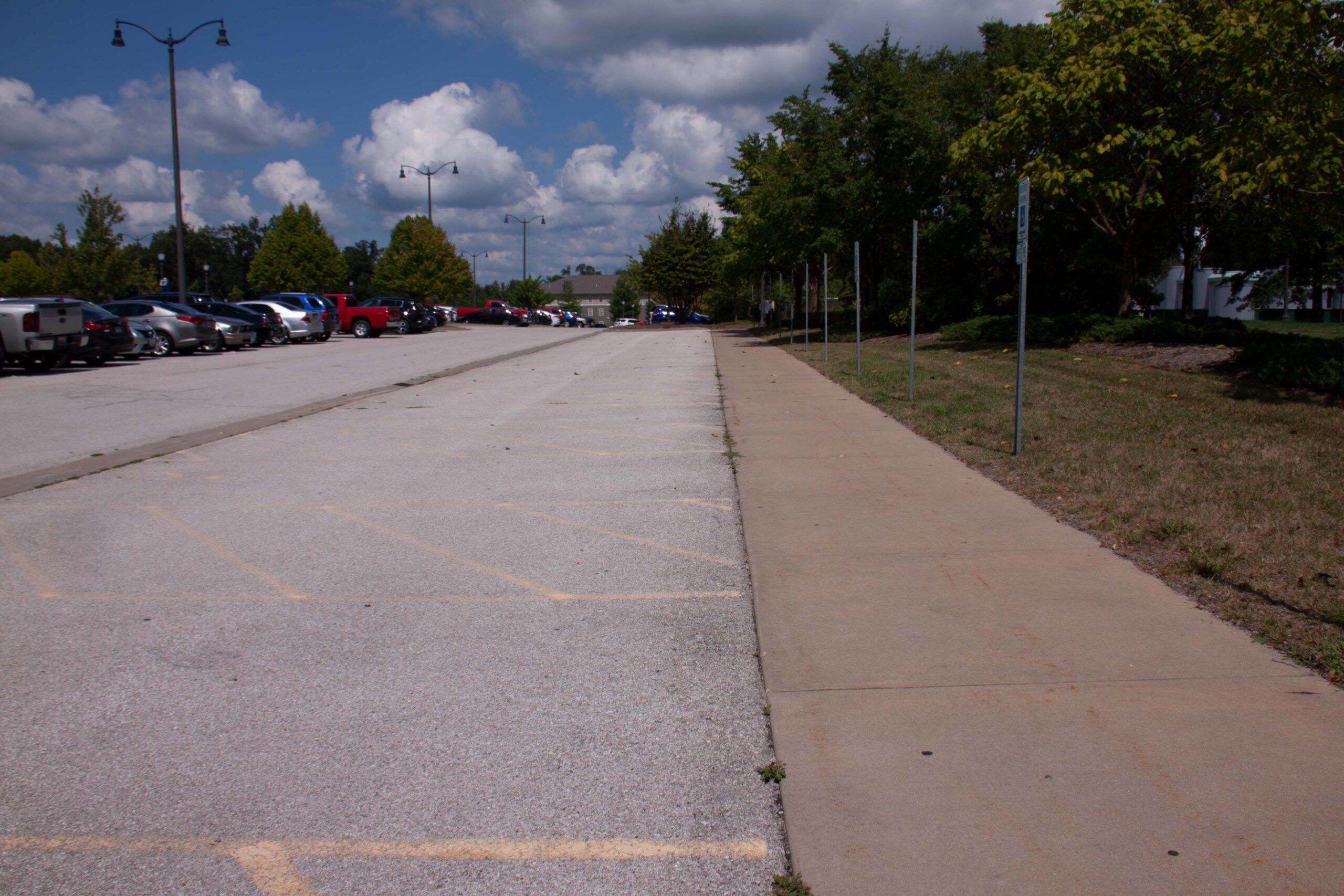
To start with, while there are lots of accessible parking spaces, not all are van accessible or connected to a sidewalk. These two things are vitally important to the safety and accessibility of disabled students. Sidewalks also benefit able-bodied students by providing a safer place to walk than the road or grass. Along with this, the sidewalk ramps by Trimpe are broken, move beneath people’s feet, and splash water as they are stepped on.
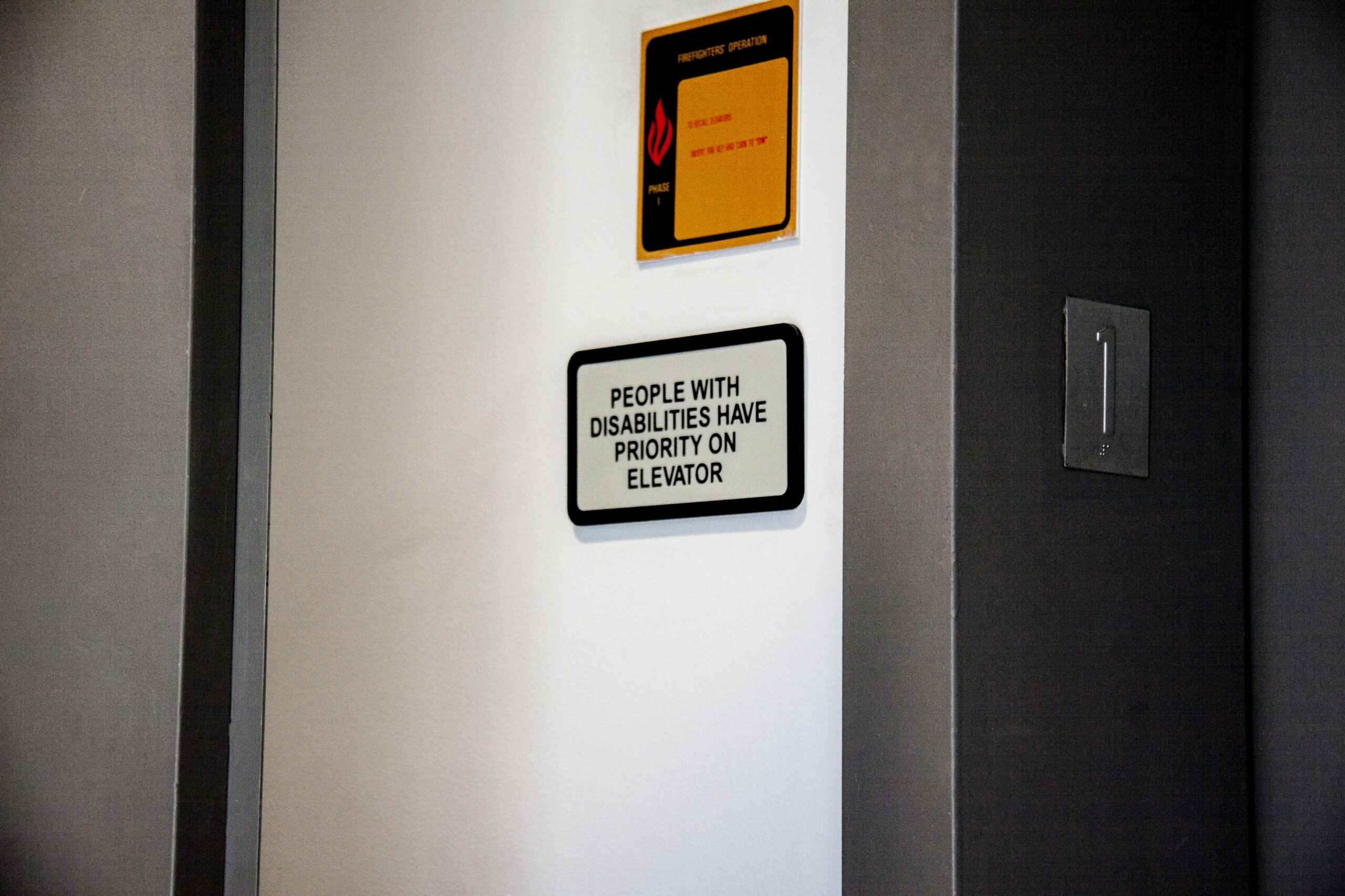
Next are the elevators. The one in Reid right outside the library is the first thing that comes to mind. It reminds me of riding the trams up the Arch when I was 12. It shakes, is slow, and honestly scares me a bit. The elevators throughout that building complex are old, and while they pass inspection, there is some concern with their quality. The elevator in Trimpe has a tendency to either open the door before the elevator has stopped moving fully or to not open until the “open door” button is pushed. This elevator also feels unstable as it likes to shift and move rather than securely stop.
There is the matter of elevator placement, as well. Most buildings only have one, and in the case of Trimpe, it’s on the other side of the building from the accessible parking. According to the Google maps rendering of campus, many of the elevators are also distanced from the main entrance or tucked into a corner.
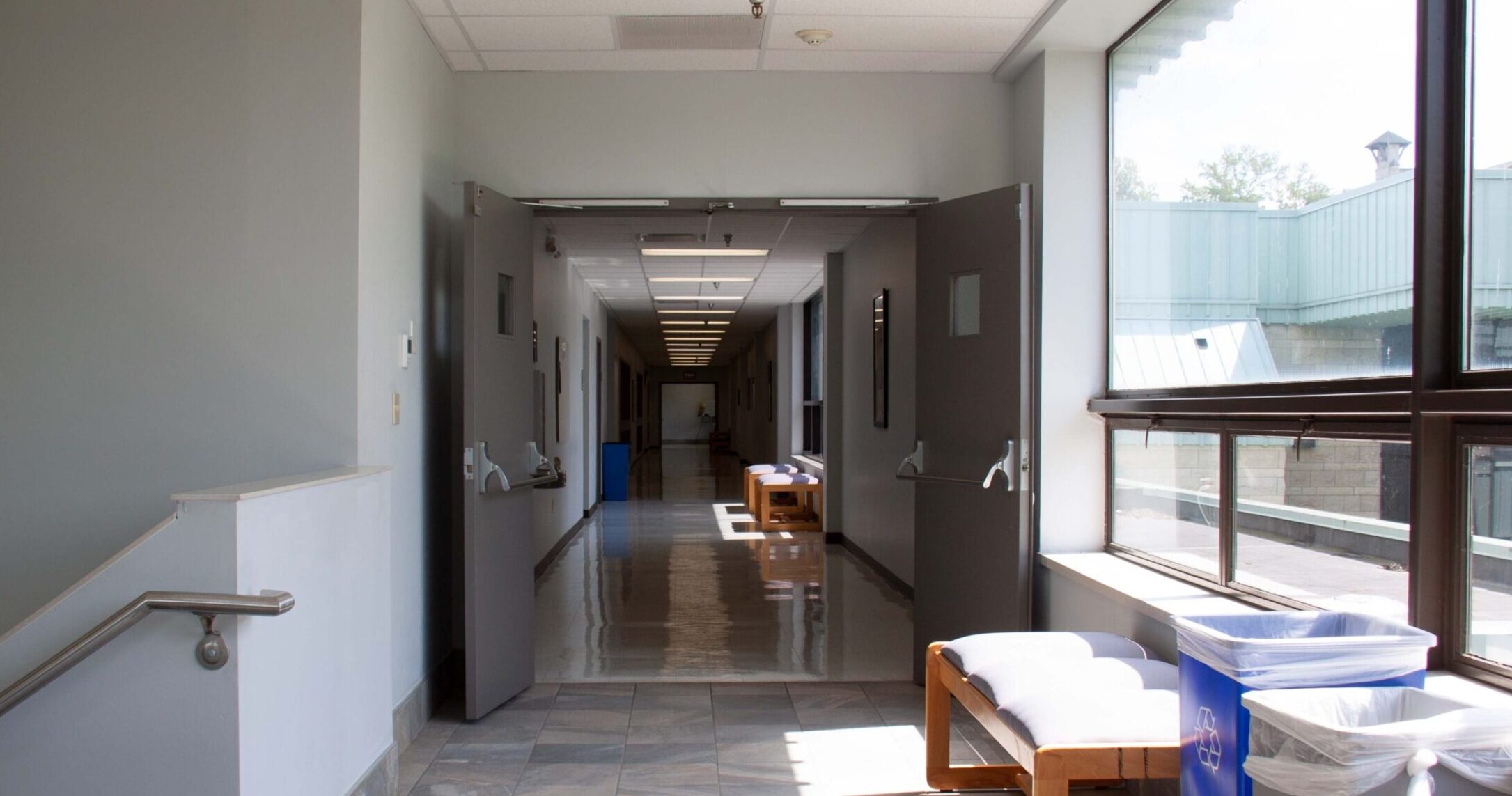
Mobility impaired students using wheelchairs are also at a disadvantage, especially in older buildings. Bathrooms all have accessible stalls, but often the entrances to these restrooms are difficult if not impossible for wheelchair users to navigate. The entrances are also often shut with no accessible options to open the door. A student using a wheelchair would have to either travel out of their way to get to a bathroom they can access or hope that another student or staff member comes by to open the door.
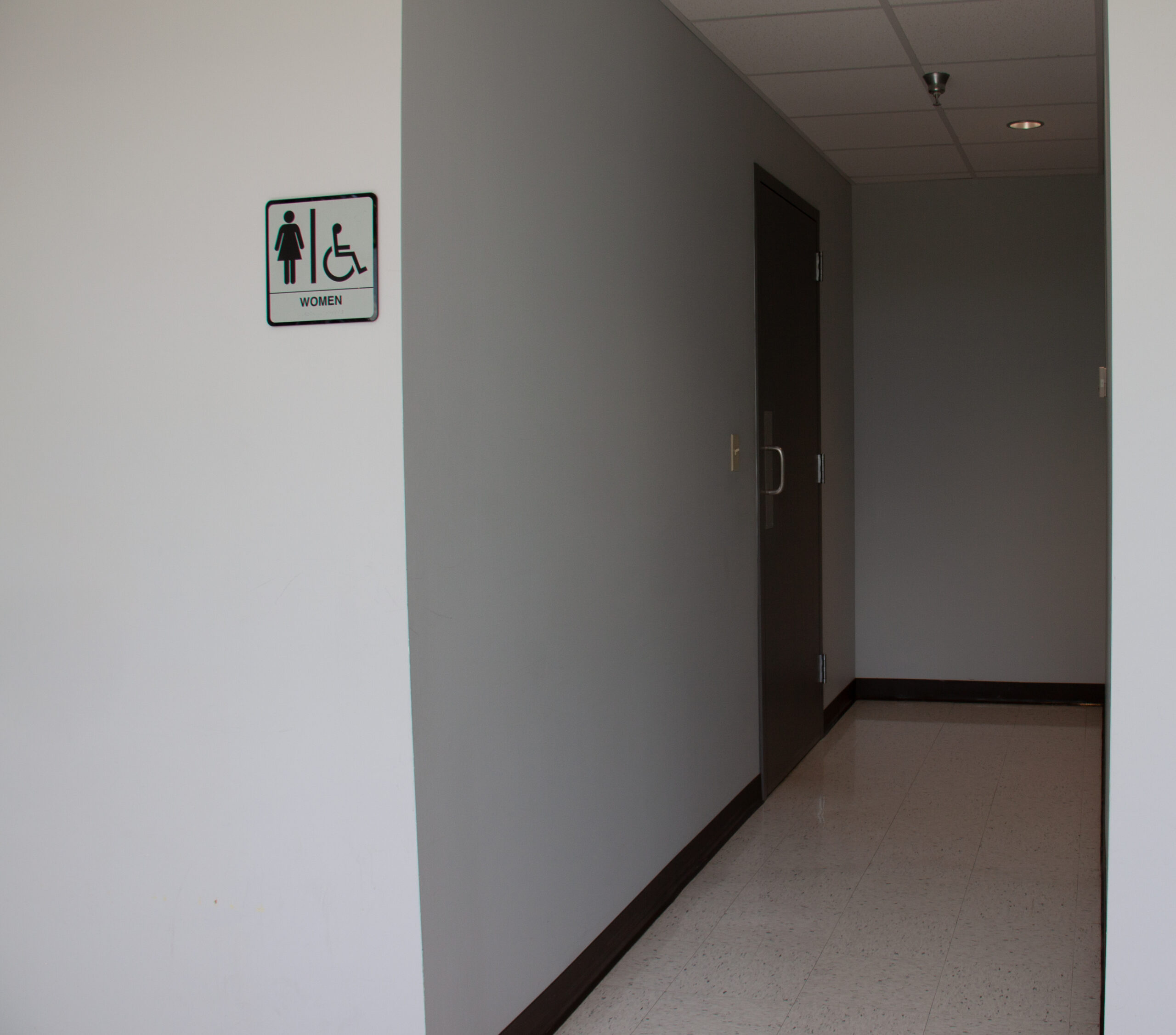
Several of the entrances are also too narrow to turn and navigate a wheelchair. In some buildings, like Trimpe, there is only one truly accessible bathroom (one female and one male), on the first floor of the building. Accessibility means the entrances can be navigated without help and are sufficiently wide to allow use.
These are just some of the issues surrounding disability, both on campus and in the world. In general, campus, as public access, is required to adjust based on the ease of putting in the accommodation. But, with historic buildings, there is even more wiggle room to avoid overtly changing access and usability.
I fully recognize that some of the issues talked about cannot be addressed without substantial financial support. By bringing them to light I hope to educate fellow students, staff, and maybe encourage the school to fix what issues they can.
Check out the Accessibility Photo Gallery:

Elevator Priority
The sign establishing elevator priority is posted only on the first floor of Trimpe. Photo by Linsa Dean

Barely Accessible Bathroom
The narrow hallway leading to this bathroom makes it barely accessible. Photo by Linsa Dean


